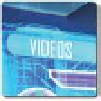Game Development Reference
In-Depth Information
Audio Middleware Structure
Most middleware out there consists of a programmed codebase that is
split into two major sections or areas. The i rst and most important to us
is the aforementioned GUI. This section, set up in a separate application
usually, is primarily set up for the audio designer to import, coni gure
and test their audio in. Its main purpose is to allow the non-code-savvy
composer or sound designer to become a sound
implementer
. There
are a lot of dif erent ways that this can be accomplished, from making
the interface look familiar, to creating completely unique views and
coni gurations.
One fairly common look is a multi-track editor view. As mentioned
previously, these environments look similar to a standard DAW but
with extra layers of interactive tools. These graphic editors allow you to
create complex layered sound structures, such as car engines, weapons,
background ambiences, crowd simulations, as well as adaptive music and
audio behaviors to control various characteristics of these sounds.
Go to the Classroom
in the App, and click
on the Video screen to
watch and hear more
about the evolution
of audio workl ow
in concept, as well
as hands on FMOD
tutorials.
Once the coni guration and testing of the audio is complete, the
implementer can then build one or more sound banks with coni guration
information that the programmer can use to integrate the audio system
with the rest of the game code. Commonly these banks and i les can
then be placed inside the game by the implementers in order to test
them out within the game environment. In some cases, the game itself
can be hooked to the middleware in real time. This is a great way to work,
as it allows even faster design changes to be made on the l y.
THE OTHER SIDE OF THE FENCE—THE API
OK, let's look at what the programmer has to deal with when using middleware. Although the audio
middleware system is constructed around a codebase, the programmer will rarely deal with it at that
level. It's much more common for them to use an
API
, or Application Programming Interface. This is a set
of instructions and script-based standards that allows access to the codebase without having to delve
too deeply into the main code, which in some cases may not be accessible—in other words it may be
what's called closed source. Web standards like HTML5, CSS, and JQuery are referred to as open source—
you can look at their code. Open source is very popular, but may not be the best decision business-wise
from a middleware developer.
A middleware company, like an audio tool development company, usually releases its API to the public
so that other software developers can design products that are powered by its service. In some cases,
they let people use it for free, like students and individuals for example. In other cases, they can charge




































